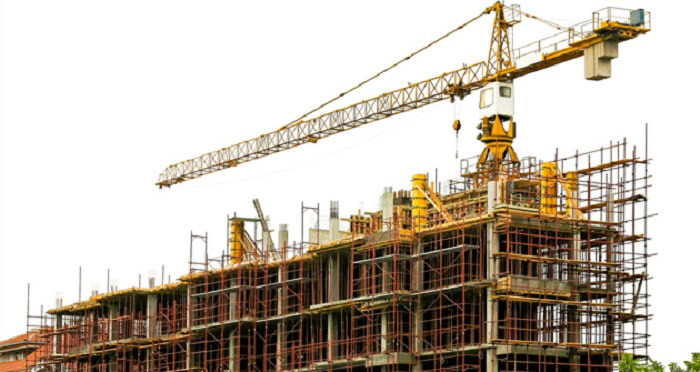Transparent embodied carbon reporting is key to delivering sustainable construction

- The current lack of consistency and transparency of embodied carbon modelling reduces industry’s ability to make meaningful sustainable decisions.
- UKGBC’s guidance will support the construction industry to accurately model and report on embodied carbon emissions, enabling the environmental impacts of construction projects to be effectively addressed.
- UKGBC’s guidance establishes a Quality Assurance process, laying out a pathway for ensuring precision, coherence, and traceability in the embodied carbon assessment process.
- The construction and property sector needs responsible regulation from government which sets minimum standards and encourages industry to accelerate action on embodied carbon.
Embodied carbon is increasingly being factored into how we design new buildings, as well as influencing decisions behind whether an existing building should be demolished or re-purposed. However, the current lack of consistency and transparency of embodied carbon modelling methods is reducing the construction sector’s ability to fully understand the environmental impacts associated with specific building materials, processes, and design choices, resulting in the true performance of a project being misrepresentation and efforts to reduce sector emissions hindered.
In response to this challenge, the UK Green Building Council has published new guidance to support the construction sector improve how embodied carbon emissions are modelled and reported on, enabling more informed and sustainable decision-making across projects. It provides stakeholders with an understanding of best practice, insight into common variations and errors within the modelling process and gives recommendations on how to improve overall reliability of modelling results.
The guidance includes key chapters on:
- How to understand and use Life Cycle Assessments (LCAs) and Environmental Product Declarations (EPDs).
- Understanding default assumptions within the RICS Whole Life Carbon Assessment Professional Standard and how they’re used within modelling tools.
- How to establish a Quality Assurance process for embodied carbon assessments and provides a template for individuals and organisations who are new to embodied carbon assessments.
- Guidance on how embodied carbon assessments can be expected to develop and change across RIBA Stages.
- Guidance on how to write a high-quality embodied carbon assessment report.
Commenting on the challenge this guidance seeks to address, Yetunde Abdul, Head of Climate Action at UKGBC said
decisions made in the early stages of any construction project such as what materials to use or whether a building can be retrofitted have significant implications on embodied carbon. To ensure we make the right decisions in these situations and prevent locking-in high levels of embodied carbon, we need maximum transparency and clarity on the calculations being made during this design and modelling phase. Without effective measurement tools, emissions will not be accurately measured and effectively abated. Transparent embodied carbon data is therefore a key pillar in achieving sustainable construction.“
Louise Clarke, Group Head of Sustainability at Berkeley Group said
By nature, embodied carbon emissions are hard to measure. They occur throughout our supply chains in a mix of different places and relate to many different processes not under our direct control. UKGBC’s guidance provides useful explanations and approaches for achieving greater accuracy and more reliable reporting on embodied carbon, as well as making the case for standard approaches to modelling to drive positive change throughout the industry.“
Turner & Townsend UK Advisory Managing Director, Peter McGettrick said
We are delighted to have been part of this taskforce to develop this new guidance to improve the consistency and transparency of embodied carbon assessments. By providing an independent review of the reporting standards we hope this will provide clarity and confidence in the figures and findings in embodied carbon reports to help support the drive for decarbonisation.
This new guidance is crucial to elevate discussions on embodied carbon impact within the industry. Consistent reporting will empower more informed decisions regarding cost and carbon and help contribute to achieving national and international governmental targets for net zero.”
Despite being a significant source of carbon emissions in the UK, embodied carbon is currently unregulated, and measurement and mitigation within construction is typically voluntary. Whilst UKGBC’s guidance lays out several ways by which practitioners can improve the assessment process, for widespread change and progress, the guidance re-emphasises the need for embodied carbon assessments to be mandated across the industry, with clear regulation that ensures consistent outcomes and meaningful progress towards reducing emissions.
UKGBC’s new guidance comes at a time of increased focus on embodied carbon within the industry, with resources from several professional institutions including RICS Whole Life Carbon Assessment Professional Standard and the Built Environment Carbon Database (BECD). UKGBC has working closely with these stakeholders to ensure its work complements that of other organisations and drive the consistent measurement of embodied carbon throughout the built environment.
UKGBC’s work on embodied carbon forms part of UKGBC’s Advancing Net Zero Programme, which has been made possible this year thanks to the generous support of our Programme Partners: BAM Construct UK, Berkeley Group, Buro Happold, CBRE, Grosvenor Property UK, Hoare Lea, ISG, JLL, Lloyds Banking Group, ROCKWOOL, Turner & Townsend, and Project Partners: Hawkins\Brown, Multiplex and PfP igloo.
Related
UKGBC tools up to tackle embodied carbon at critical moment for delivering net zero

Beyond the building: reducing embodied carbon through innovative master planning

The Whole Life Carbon Roadmap – 4 Key Findings You Might Have Missed

UKGBC launches a Commercial Retrofit Innovation map


